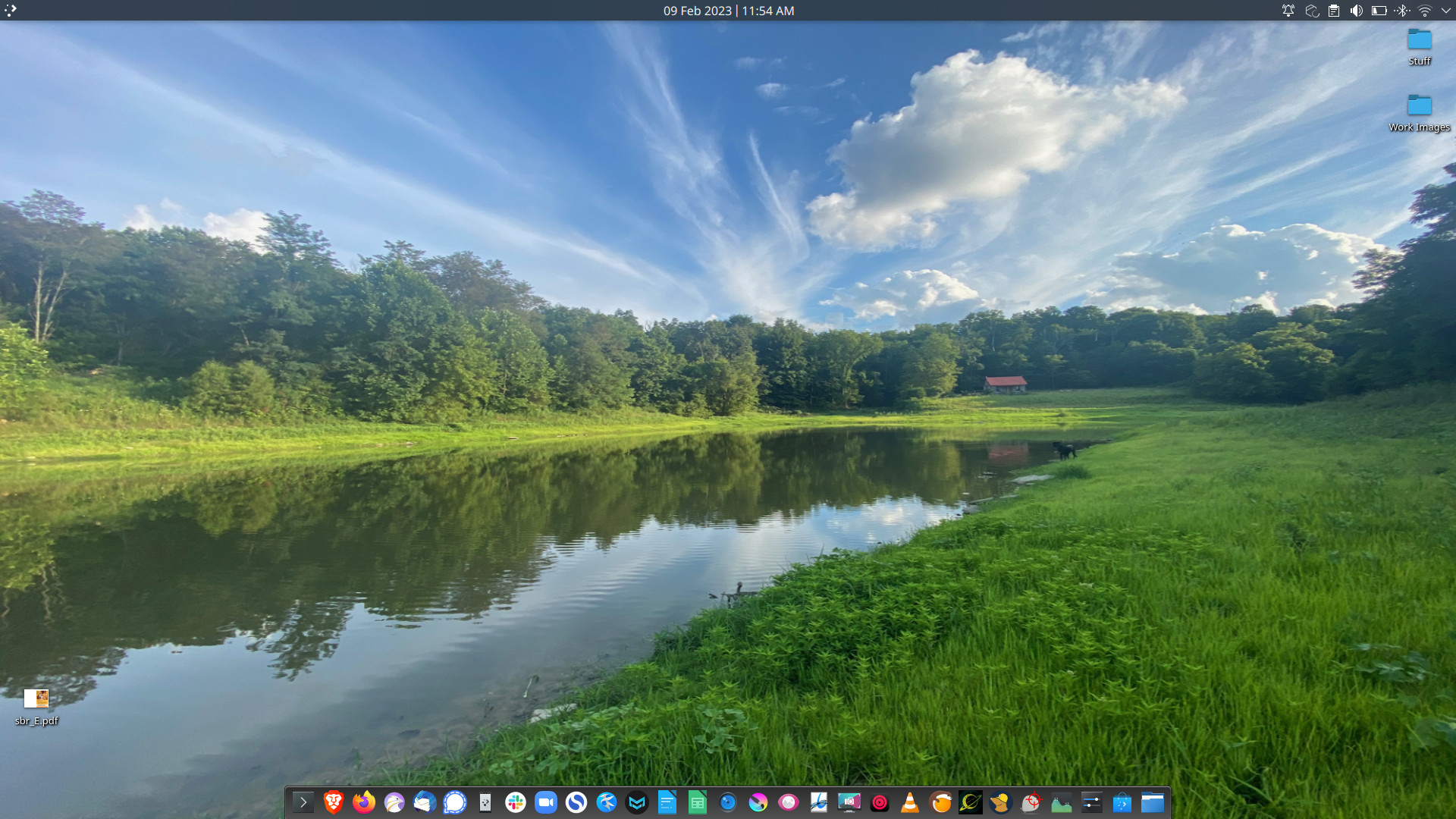KDE Neon is the official KDE distro and one of the more unusual Linux distros, especially among those based on Ubuntu.
KDE Neon: The Semi-Rolling KDE Distro
KDE Neon was formed when Kubuntu’s lead developer, Jonathan Riddell, was forced out of Canonical, the maker of Ubuntu. Officially, KDE Neon is not called a distro but a “a rapidly updated software repository,” even though it is a Linux distro in every way that matters. Interestingly, that choice also gives KDE Neon an unusual characteristic:
The latest and greatest of KDE community software packaged on a rock-solid base.
Essentially, that means that KDE Neon is a semi-rolling distro. While the base is Ubuntu LTS, with major version updates every two years, all of the KDE software is updated as it is released. To be clear, that doesn’t just mean the KDE Plasma desktop environment (DE), but ALL of the KDE applications bundled with the distro, as well as any KDE apps the user installs.
KDE Neon gets even more interesting when paired with Flatpak or Snap since both Flatpak and Snap are universal packaging formats, where apps are released as they are updated.
When I run KDE Neon, I try to use only KDE apps and Flatpak apps for non-KDE apps. This essentially made my Neon installation a true semi-rolling release, with my DE and all my apps updated regularly — like a true rolling release — while the base remained as solid as ever, thanks to Ubuntu LTS.
Minimal Install
Another area where KDE Neon shines is its minimal install. Unlike many distros, Neon comes with very few applications. The text editor Kate, KDE Connect, Firefox, and a few other KDE apps are all that come with the distro by default. In fact, it doesn’t even come with an email client, giving users the option to install the apps they want rather than having to go through the system and remove the ones they don’t.
The same is true of both Flatpak and Snap. Although KDE Neon has support for both formats out of the box, no Flatpaks or snaps are installed. Users choose whether they want to install apps via Flatpak, Snap, or Ubuntu’s repositories.
KDE As Its Developers Intended
The real beauty of KDE Neon is that it is the purest, most unadulterated implementation of the KDE ecosystem. As such, I’ve found it to be one of the most stable, trouble-free distros using KDE Plasma.
While KDE Plasma can sometimes be buggy in other distros, Plasma on Neon is one of the more solid experiences. While everyone’s experience is different, KDE Neon’s stability and reliability are rivaled only by Kubuntu. In fact, despite the praise it receives, openSUSE Tumbleweed was never as stable for me as Neon was.
One Potential Issue
One issue that may impact some users, however, is mismatched libraries. By nature, Ubuntu and its derivatives are point-release distros. That means that very little changes from one point release to another, including the libraries that applications rely on.
In contrast, the KDE Plasma desktop and apps are constantly changing and evolving, with the libraries KDE depends on constantly updating as well. As a result, it’s not uncommon to install a non-KDE app from the Ubuntu repositories that doesn’t work on Neon. This can happen because the app is expecting a specific version of some library or dependency that shipped with the Ubuntu base but has been updated to a newer version because of a KDE update.
This is another reason to use Flatpak or Snap for non-KDE apps since both package formats bundle their own versions of required dependencies and don’t rely on the ones bundled in the system.
Update Process
Because of KDE Neon’s semi-rolling nature, the developers recommend using pkcon instead of apt if you prefer to update and install apps via the Terminal. For the most part, pkcon uses very similar syntax as apt.
If you’d rather use apt, however, you easily can. Just be sure to run apt full-upgrade (which is what pkcon update maps to) instead of apt upgrade.
Should You Use KDE Neon?
KDE Neon is one of the best choices for KDE fans who want to experience the ecosystem the way the developers intended. It’s also a good option for users that want a solid base with a rolling desktop environment and apps.
At the same time, the rolling front-end on a point-release base can occasionally cause issues. Because KDE development moves at a fast pace, it’s also possible to run into KDE-specific bugs from time to time, although they usually get fixed in a matter of days. Even so, users should understand the potential pitfalls of such a unique distro.
In fact, as highlighted above, users would do well to ONLY install KDE apps and either Flatpak or snaps for non-KDE apps. This will ensure the most stable and reliable system.
If you’d like to try KDE Neon, you can learn more and download it here.
Rating
4.0 out of 5 stars







 WebProNews is an iEntry Publication
WebProNews is an iEntry Publication